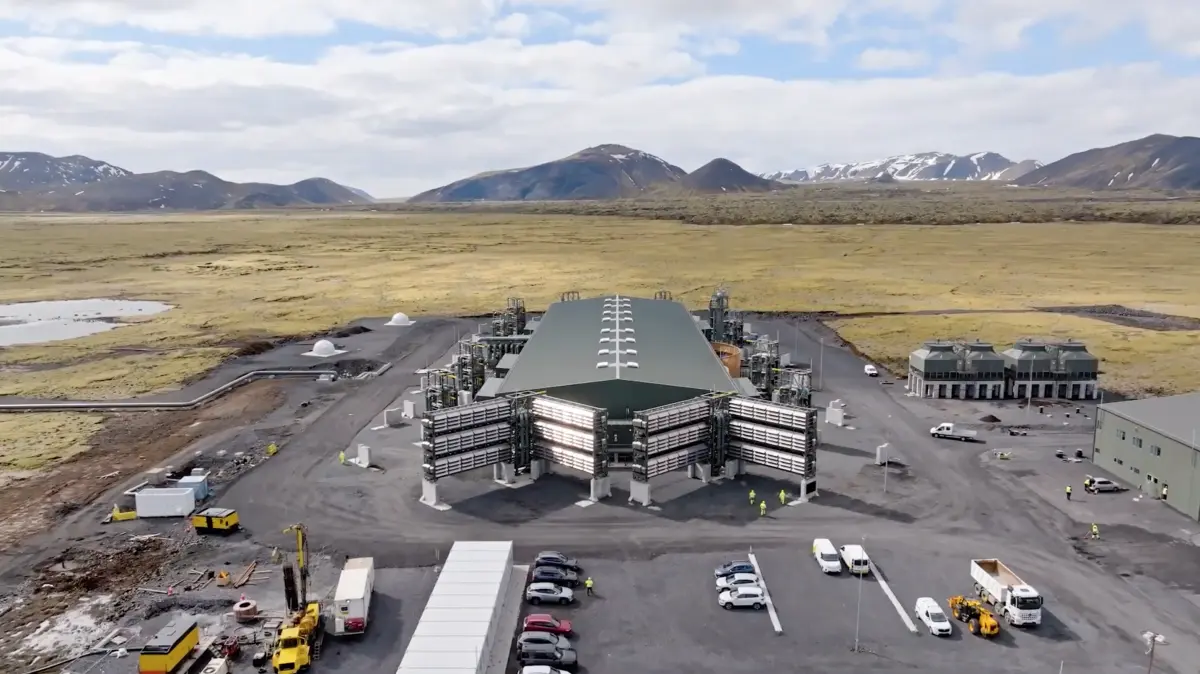So according to statista in 2023 global emissions were 37.5 billions of tons, and exponentially growing since 1944.
In the article they say they can remove 36,000 tons of CO2 and the goal is
For the world to achieve “carbon neutrality” by 2050, “we should be removing something like six to 16 billion tons of CO2 per year from the air,”
That’s a drop in the bucket alright. Sustainability and capitalism (with its embedded exponential growth) cannot coexist.
It’s not even a drop in the bucket. A drop maybe contains 0.1 ml, a bucket contains 10l, so that’s 0.001%. This is way less of the needed volume of capture, 0.000225%.
Has anyone done the math and figured out if these things are more efficient than trees? I have my doubts but I’m also a pleb so idk how to compare them.
I mean just looking at the amount of concrete in that picture, I get pessimistic. When will this particular site have dug itself out of the carbon “hole” created by its construction?
As for trees: That is really, really hard to measure and even harder to know in advance. Some factors appear to be:
- different tree species store different amounts of carbon
- tree plantation or actual forest?
- prior use of the site (e.g. meadows do store carbon too)
- development over time (most trees need to grow a couple years before they start storing significant amounts of carbon)
- failure of sites due to being planted in a bad way (e.g. a lot of Chinese Green Wall sites and quick-buck billion tree projects seem to be affected by this)
IIRC, a tree absorbs up to 3 tons/year, and takes a bunch of years to get to that stage.
The trees also don’t sequester underground, and will need surface area staying as forest for the rest of time.
As many have echoed: an ounce of prevention saves a pound of cure. Most bang for our buck would be to change our lifestyle and regulations. But as that’s not feasible we’re at the geo engineering and artificial sequestration stage.
I don’t know what more efficient means here. The CO2 is stored sorta permanently underground, whereas trees release their CO2 when they rot or burn.
Trees are kind of better because they grow on their own, and don’t require massive amounts of green energy to scrub the atmosphere.
CO2 generally is released in cycles. Wood rots, new forests grow etc. The biggest issue is that we went from slow cycles such as carbon is stored in fossil fuels that VERY slowly release CO2 through natural processes, to extremely rapid release of CO2.
How do you measure “efficiency” ? By money spent? Then yes, trees are currently cheaper. But trees are complicated (see other comments). Additionally, even if we cover the whole landmass with trees, there is still a catastrophic amount of Co2 left in the atmosphere.
than* trees
A sizable carbon tax is the best way we can handle this that I can think of.
I think they should aim to turn all that CO2 to carbon fiber. That way they could sell it and and have a profit. That way would lead to others building their own capture plants (if there’s money to win…).
There’s lots of industrial uses for CO2 – this style of DAC plant can be viewed as a green producer. That said, it’s really easy to outpace industrial demands and we can expect any facility like this will need to be sequestering most of their “production”. It’s hard to overstate how much excess CO2 there is in the atmosphere compared to the sum total of all industrial carbon dioxide needs. Since CO2 is thermodynamicly very stable, splitting it up to get pure carbon would be quite inefficient.
It’s part of the business model of every single DAC project pretty much without exception. Any way you can make back a bit of money selling that CO2 rather than sequestering it is an opportunity to offset costs. And no matter what you think of market economics, they’re very effective at reducing costs.
One of the most interesting uses is with projects like e.g. CarbonCure, where they dope cement production with CO2 which has known effects to strengthen (or at least not weaken) concrete. They don’t produce their own CO2 for their plants and so need to align themselves with renewable CO2 production facilities (which they do Heirloom Carbon).
Big issue is they it’s hard to compete with fossil-based CO2 production. So the next step once tech like this is proven is to start regulating/banning fossil-based CO2 production.
That’s one of the big goals, plants like this are important too because they allow the tech to be developed and tested so we have real world numbers to work with when planning and designing for commercial applications
The company’s previous record-holding carbon capture plant, Orca, sucks around 4,000 tons of CO2 from the atmosphere per year, but the new plant can handle nearly ten times that, as reported by The Washington Post.
The plant’s called Mammoth and boasts 72 industrial fans that can pull 36,000 tons of CO2 from the air each year.
Ackshulaaly that’s not nearly 10 times, that’s exactly 9 times
Ackshulaaly, they claimed it can handle “nearly 10”. 9 is nearly 10. Pushes glasses back up bridge of nose
You just out-akshuallied the other guy. Nice
36,000 tons a year and how energy is needed to sequester this piddling mount of CO2? Leaving the pre-sequestered stuff on n the ground is definitely cheaper. Bring on the carbon tax.
I shared the article because it is relevant to this community but I personally do not like carbon capture. You don’t need to capture what you don’t create
Thanks for the article. Your thoughts are probably similar to mine in that carbon capture probably is part of the solution but it’s hard to see how the volume of CO2 captured can be ramped up enough to be meaningful. It is certainly meaningless if we don’t stop burning fossil fuels.






